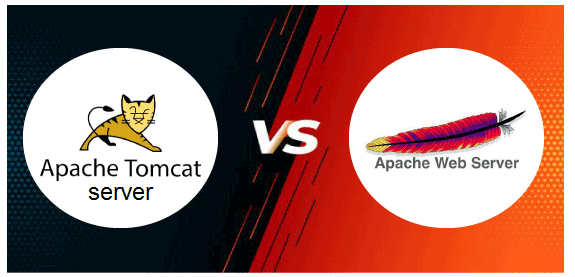Apache Tomcat Server VS Apache Webserver

Apache Tomcat Server and Apache HTTP Server (commonly known as Apache Web Server) are both powerful and widely used software solutions, but they serve different purposes and are designed for different use cases. Here's a comparison between the two:
-
Purpose:
- Apache Tomcat Server: Apache Tomcat is primarily a servlet container and web application server. It is specifically designed to execute Java servlets and JavaServer Pages (JSP), providing a platform for deploying Java-based web applications.
- Apache HTTP Server (Apache Web Server): Apache HTTP Server is a general-purpose web server software. It serves static and dynamic web content using the HTTP and HTTPS protocols. While it can handle dynamic content through server-side scripting languages like PHP, it is not specifically designed for Java servlets and JSP.
-
Technology Stack:
- Apache Tomcat Server: Tomcat is built to support Java-based web technologies, including Servlets, JSP, and Java Expression Language (EL). It provides a Java Servlet container for running Java web applications.
- Apache HTTP Server (Apache Web Server): Apache HTTP Server supports a wide range of technologies and scripting languages, including HTML, CSS, JavaScript, PHP, Python, Perl, and more. It is not limited to Java-based technologies like Tomcat.
-
Use Cases:
- Apache Tomcat Server: Tomcat is commonly used for hosting Java web applications, including enterprise applications, web services, and dynamic websites developed using Java technologies. It is well-suited for environments where Java-based web development is the primary focus.
- Apache HTTP Server (Apache Web Server): Apache HTTP Server is used for hosting a variety of web content, including static HTML pages, CSS files, images, and dynamic content generated by server-side scripts. It is suitable for a wide range of web hosting scenarios, including small personal websites, blogs, e-commerce sites, and enterprise web applications.
-
Configuration and Features:
- Apache Tomcat Server: Tomcat has a configuration tailored for Java web applications, with specific settings for servlets, JSP, and other Java-related features. It provides features like servlet container management, JNDI (Java Naming and Directory Interface) support, and JDBC (Java Database Connectivity) connection pooling.
- Apache HTTP Server (Apache Web Server): Apache HTTP Server offers a broader range of configuration options and features, including support for virtual hosting, URL rewriting, authentication mechanisms, caching, and more. It is highly customizable and can be extended using Apache modules.
-
Deployment and Management:
- Apache Tomcat Server: Tomcat is commonly deployed for Java web application hosting and is managed using tools like Apache Tomcat Manager, which provides a web-based interface for deploying, configuring, and managing web applications.
- Apache HTTP Server (Apache Web Server): Apache HTTP Server is used for hosting various types of web content and is managed through configuration files and command-line tools. It can be deployed standalone or integrated with other web technologies and frameworks.
In summary, Apache Tomcat Server and Apache HTTP Server serve different purposes in the web hosting ecosystem. Tomcat is specialized for hosting Java-based web applications, while Apache HTTP Server is a general-purpose web server suitable for hosting a wide range of web content and technologies. The choice between the two depends on the specific requirements of the web hosting environment and the technologies used in web application development.
Thank you,
